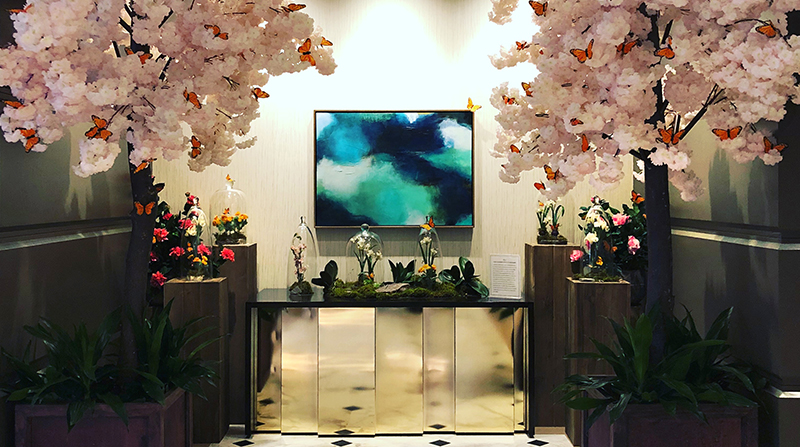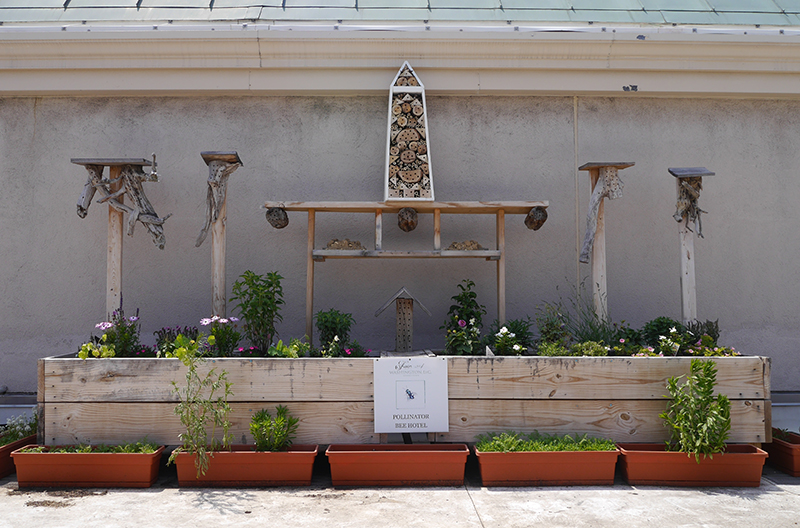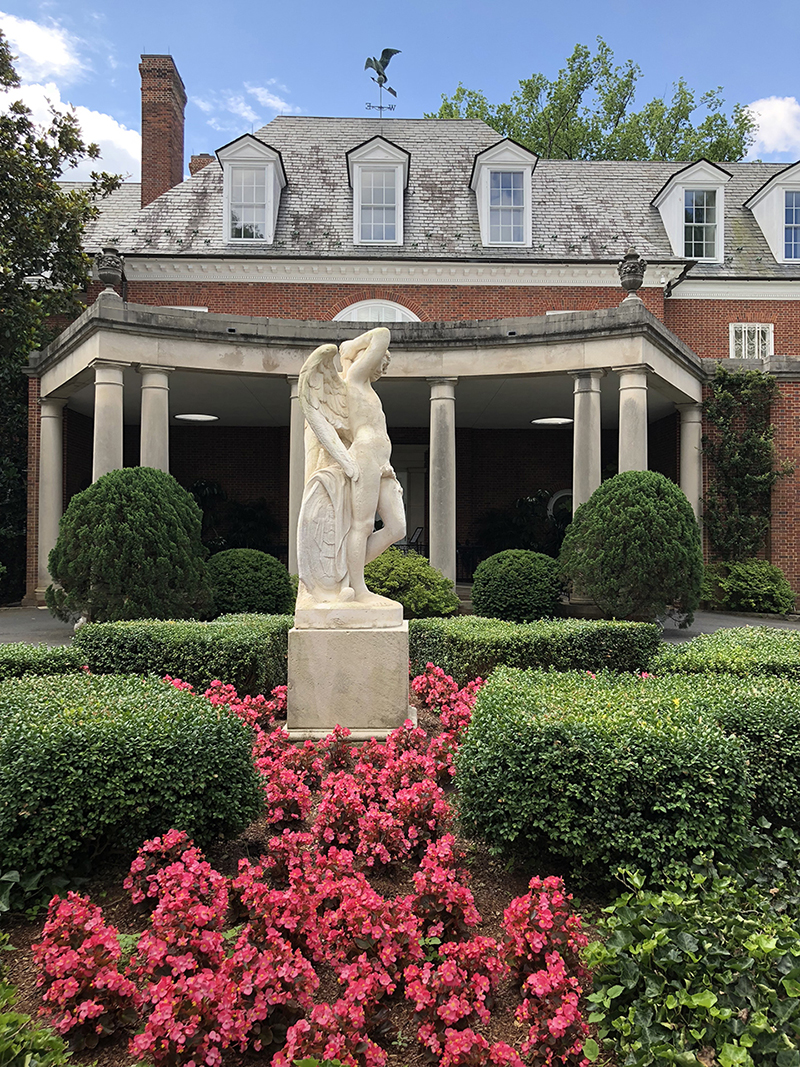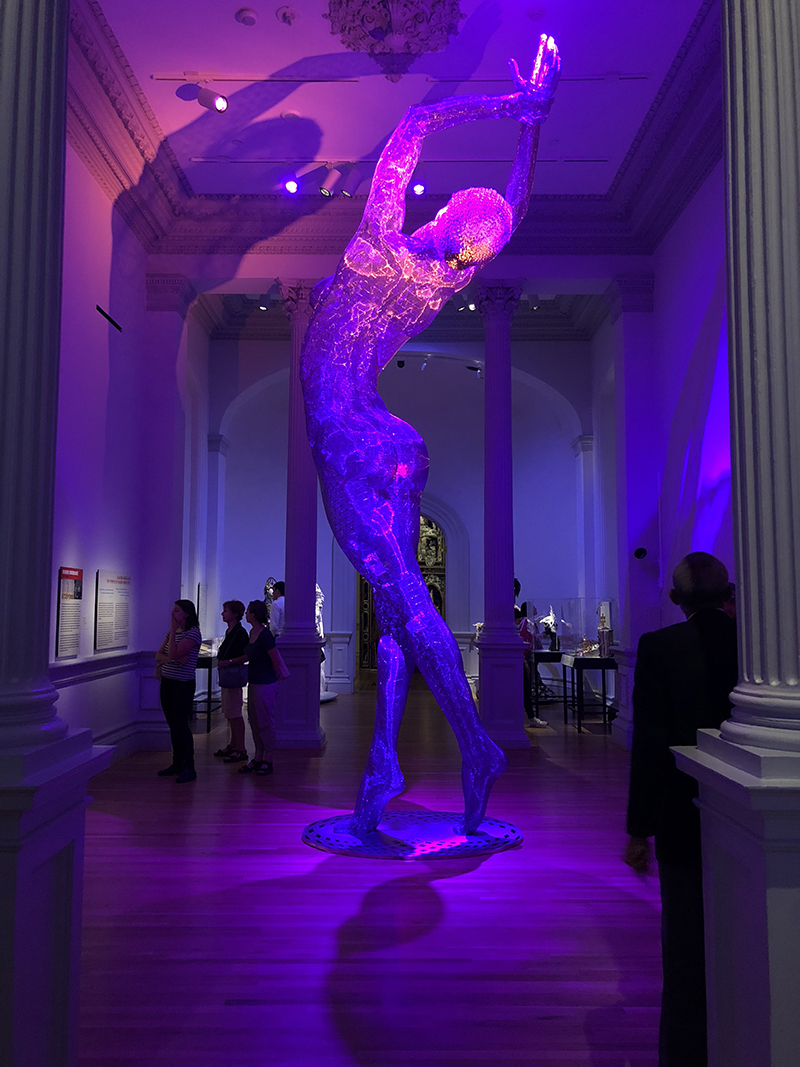
Washington, D.C., may be filled with museums and historic monuments, but that doesn’t mean it isn’t full of new ideas. From urban beekeeping to wandering through a historic city-center garden, the nation’s capital offers plenty of ways to see the sights and get your vitamin D fix — all while supporting green efforts. This is our guide to enjoying a sustainable stay in D.C.
Where to Stay
Just a quick 15-minute ride from Ronald Reagan Washington National Airport, the recently renovated Fairmont Washington, D.C., Georgetown puts you right in the heart of the action. But the spectacular lobby, stylish guest rooms and sometimes-celeb-studded gym (you didn’t hear it from us) aren’t the only reasons to make a reservation at this contemporary hotel.
When you savor a sip at the bar or dine at the property’s posh restaurant, Juniper, you’ll get a sweet taste of Fairmont’s Bee Sustainable initiative in the form of house-filtered honey made by the hotel’s own bees. One of 40 Fairmont properties around the globe to house a beehive, the Georgetown stay goes a step further by giving you the chance to get up close and personal with the popular pollinators when you book the hotel’s Bee a Beekeeper Package this summer.

Fairmont Washington, D.C., Georgetown’s Pollinator Bee Hotel. Credit: Fairmont Washington, D.C., Georgetown
Available through October, this unique offering includes not just a tour of the rooftop bee and herb gardens, but also a two-hour, hands-on session with a pro to teach you the basics of beekeeping. Once you’ve mastered the skills, shop for supplies with a $500 gift card to Draper’s Super Bee Apiaries while a $100 donation will be made in your name to the DC Beekeepers Alliance to keep the local pollinator population happy and healthy long after you’ve left.
After bonding with the flying insects, you’ll enjoy a slew of culinary delights, including housemade honey-walnut bread, sweet BeeTinis (the hotel’s signature cocktail) made with the fruits of your labor and a booklet of honey-inspired recipes to take home. As an added perk, you’ll also get two tickets to Mount Vernon to explore the historic estate’s gorgeous gardens, pollinated by the residents of the property’s own onsite beehives.
https://www.instagram.com/p/BHC18s8j4yU/?taken-by=capitalbikeshare
How to Get Around
One of the greenest ways to get around the city is by bike, but you don’t have to worry about renting a set of wheels for the duration of your stay. Thanks to a boom in bike-sharing around the capital over the past 10 years, you can simply download an app, find your ride and hit the road.
Capital Bikeshare is the city’s most established and popular service, with 4,300 bicycles and more than 500 stations around the metro area and surrounding counties.
But if you want to be part of the next wave of green rides, try one of the newer dockless options. For nearly a year, D.C. has been experimenting with dockless bike-sharing, meaning that rented wheels — from companies like Mobike, LimeBike and Spin — can be returned almost anywhere, rather than to a physical dock where there may or may not be a parking space. Just download the app, scan your bike to unlock it and you’re off.
For shorter trips, or just for fun, hop on one of the brand-new electric scooters from companies like Bird. You’ll likely see more than one teenager whiz by on these popular rides.

Hillwood Estate. Credit: Sarah Chanin
What to Do
Now that you’ve got your wheels, you’ll need somewhere to explore. Obviously, the nation’s capital boasts myriad monuments and memorials to visit, but if you’re looking for something a little off the beaten track (but keeping with the eco-friendly theme), make your way down to Rock Creek Park.
This expansive, 1,754-acre urban green space is a bona fide national park within the city limits. You could drive right by and not even realize it’s there. In addition to an array of scenic trails to ride or hike at the underrated attraction, it also hides another historic gem: Hillwood Estate.
The former home of local businesswoman, socialite and collector Marjorie Merriweather Post, the mansion and its 25-acre grounds are now a museum with meticulously kept gardens available for self-guided tours, professionally led workshops and simple afternoon strolls in the D.C. sunshine.
Though you may be enchanted by the scenery outside, don’t miss a chance to eye Post’s incredible collection of Russian art. On display until January 13, “Fabergé Rediscovered” showcases nearly 90 intricate pieces built by the famed jeweler, many of which were owned by the Russian royal family just before the revolution. Be sure to look out for the two imperial Fabergé eggs — exquisite Easter gifts exchanged among members of the czar’s family.

“Truth Is Beauty” at Renwick Gallery. Credit: Sarah Chanin
When you need a break from the city’s infamous humidity, make your way to the Renwick Gallery to view sustainability in a whole new light. Part of the Smithsonian American Art Museum, the folk-art-focused space is hosting a unique exhibit titled, “No Spectators: The Art of Burning Man.”
For those unfamiliar with the annual event, Burning Man is a weeklong festival of artistic expression, innovation and decommodification in the middle of Nevada’s Black Rock Desert. Centered around 10 defining principles, including the practice of “leaving no trace,” Burning Man features massive sculptures (replicas of which can be seen on display at the gallery) that are often made from found materials and only exist for the week — the works of art are burned at the conclusion of the festival.
In addition to having scaled-down versions of the larger-than-life sculptures, the thoughtfully curated showing has a longer shelf life (through January 21, 2019). It also includes intricate handmade costumes, artifacts from past events and a ballroom-sized wooden installation from David Best, the designer of the festival’s famous nondenominational temple — just the place to reflect on your eco-friendly adventure.
